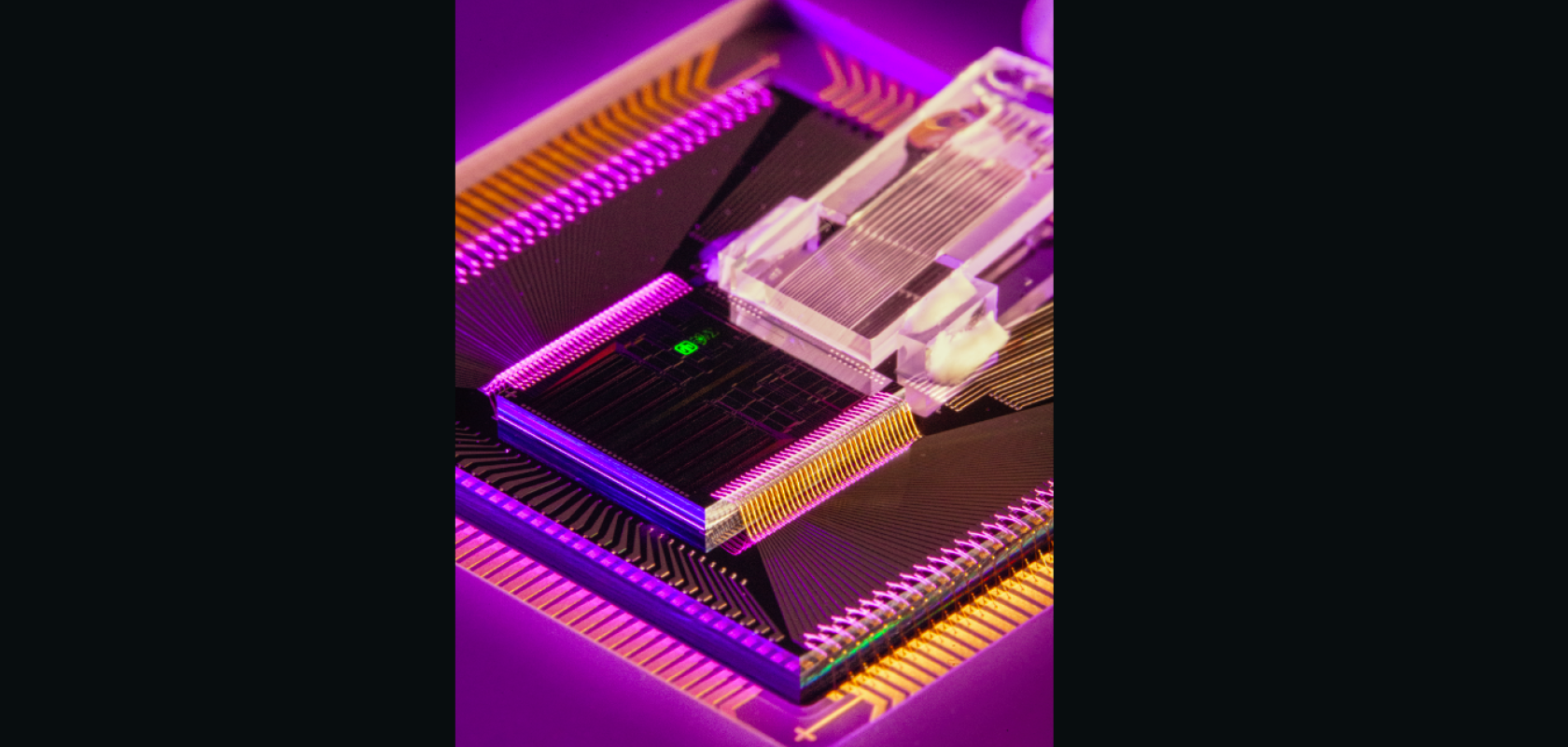Researchers have made significant progress towards a ‘quantum compass’ that promises to reduce reliance on global positioning satellites for navigation, increasing security and aiding navigation in war zones.
For the first time, scientists performed a quantum sensing technique called atom interferometry using silicon photonic microchip components, integrating key laser system functions onto a photonic integrated circuit.
Until recently, such a sensor – a thousand times more sensitive than today’s navigation-grade devices – would have been the size of a truck.
The work included the development of an innovative silicon photonic modulator – and working with photonics companies could aid in bringing such a device to market, the researchers told Electro Optics.
GPS-free navigation important for defence
When GPS signals are unavailable, accurate navigation becomes challenging. This is particularly an issue in war zones, where electronic warfare units can jam or spoof satellite signals to disrupt troop movements and operations.
Fortunately, quantum sensing offers a solution. “By harnessing the principles of quantum mechanics, these advanced sensors provide unparalleled accuracy in measuring acceleration and angular velocity, enabling precise navigation even in GPS-denied areas,” said scientist Jongmin Lee from Sandia National Laboratories in the United States.
Modulator the focal point of chip-scale laser system
Typically, an atom interferometer is a sensor system that fills a small room. A complete quantum compass – more precisely called a quantum inertial measurement unit – would require six atom interferometers.
Lee and his team have already reduced its size, weight and power needs, for example by replacing a vacuum pump with a miniaturised vacuum chamber and consolidating several components on an optical table into a single, rigid apparatus.
The new modulator, the centrepiece of a laser system on a microchip, replaces a conventional laser system typically the size of a refrigerator.
Lasers perform several jobs in an atom interferometer, and the Sandia team uses four modulators to shift the frequency of a single laser to perform different functions.
However, modulators often create unwanted echoes called sidebands that need to be mitigated. Sandia’s suppressed-carrier, single-sideband modulator reduces these sidebands by 47.8 decibels – a measure often used to describe sound intensity but also applicable to light intensity – resulting in a nearly 100,000-fold drop.
While single-sideband modulators exist, the drastically improved performance represents a key achievement, said Sandia scientist Ashok Kodigala.
To achieve this improvement in performance in the desired configuration, the team needed a single-sideband (i.e., a frequency-shifted laser tone) from the modulators while suppressing the input laser tone (i.e., carrier signal). “However, in the process of generating that one single-sideband, we end up generating multiple sidebands around the carrier,” Kodigala explained to Electro Optics.
The team had to work out how to suppress the carrier and the unwanted sidebands so that, ideally, only one wanted sideband remains at the output. “The way we achieved such high sideband suppression is by carefully balancing all the radio-frequency input signals to our modulators (both amplitudes and phases),” said Kodigala. “We also balanced all of the optical amplitudes and phases within our modulator.”
Future applications in lidar, quantum computing and optical communications
As the technology gets closer to field deployment, the team is exploring other uses beyond navigation.
Researchers are investigating whether it could help locate underground cavities and resources by detecting the tiny changes these make to Earth’s gravitational force. They also see potential for the optical components they invented, including the modulator, in lidar, quantum computing and optical communications.
“I think it’s really exciting,” Kodigala said. “We’re making a lot of progress in miniaturisation for a lot of different applications.”
Currently, the modulators are entirely made at Sandia National Labs, including the design and fabrication, featuring a custom design for atom interferometry. “But a partnership with any photonic company making modulators could help commercialise this type of modulator if there is market demand for it,” Kodigala told Electro Optics.
Silicon device mass-producible and more affordable
Besides size, cost has been a major obstacle to deploying quantum navigation devices. Every atom interferometer needs a laser system, and laser systems need modulators.
“Just one full-size single-sideband modulator, a commercially available one, is more than $10,000,” Lee said.
Miniaturising bulky, expensive components into silicon photonic chips helps drive down these costs.
And since they can be manufactured using the same process as virtually all computer chips, the device can be mass-produced at a much lower cost compared to today’s commercial alternatives, enabling the production of quantum inertial measurement units at a reduced cost.
“We can make hundreds of modulators on a single 8-inch wafer and even more on a 12-inch wafer,” Kodigala said.
The research was supported by Sandia’s Laboratory Directed Research and Development programme. It took place, in part, at the National Security Photonics Center, a collaborative research center developing integrated photonics solutions for complex problems in the national security sector.
The research was recently published in Science Advances.


